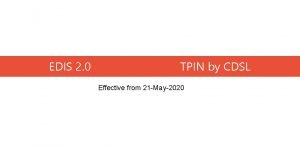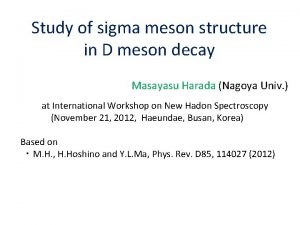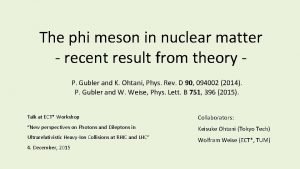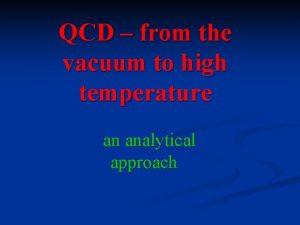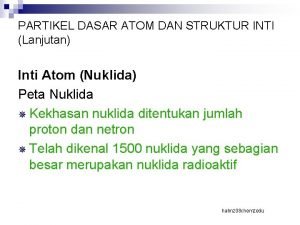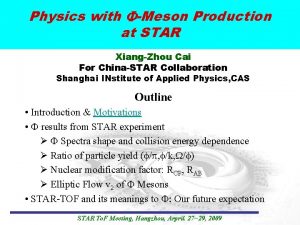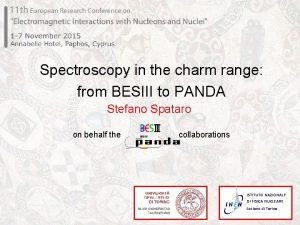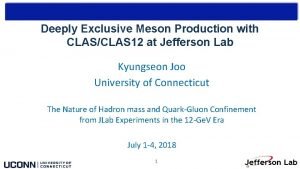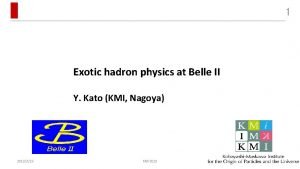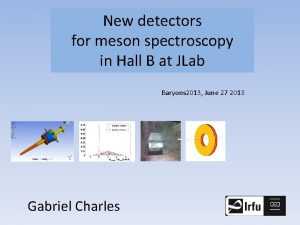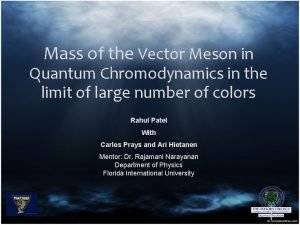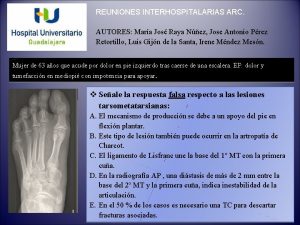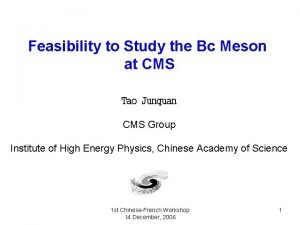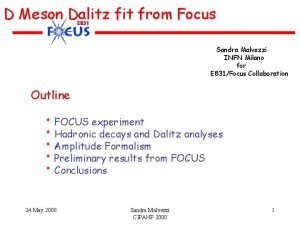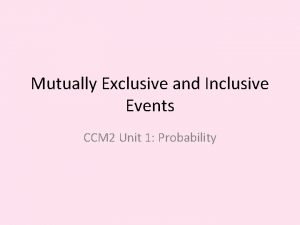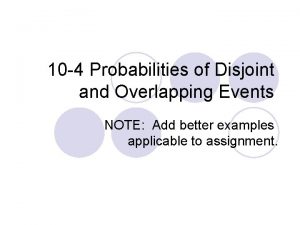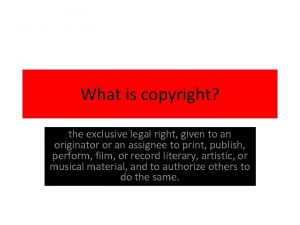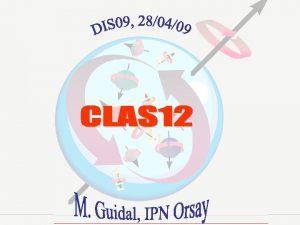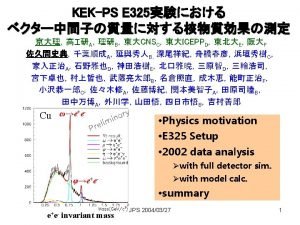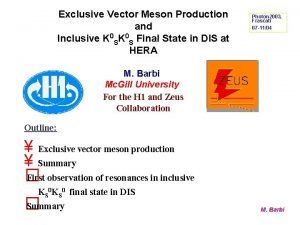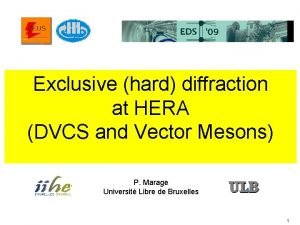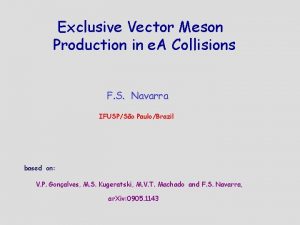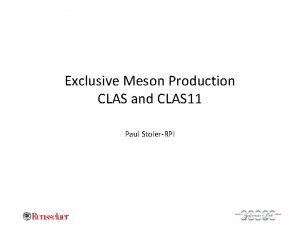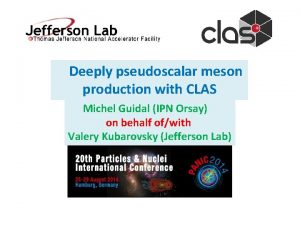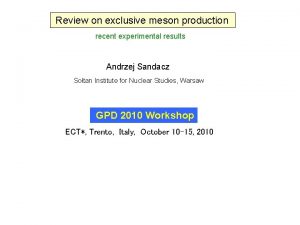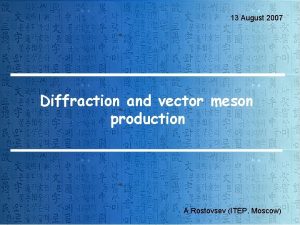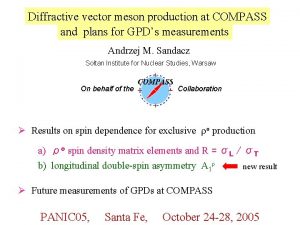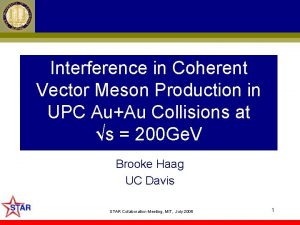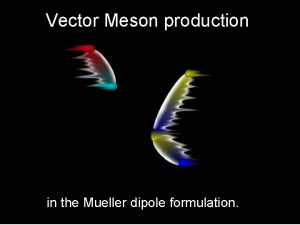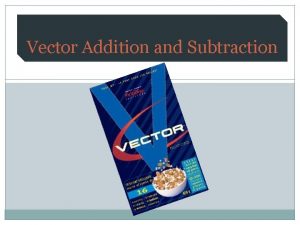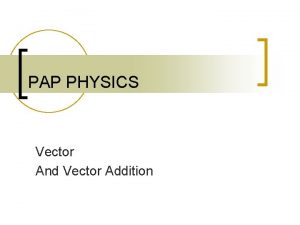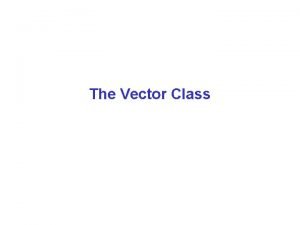DVCS and exclusive vector meson production in DIS


























- Slides: 26

DVCS and exclusive vector meson production in DIS Christoffer Flensburg (continuing Emil Avsars work) Ph. D under Leif Lönnblad and Gösta Gustafson (Lund) Particle days 08

Contents • The need for Fluctuations • How our dipole model accounts for it • Comparison with experiments • Future plans and ideas

Eikonal cross sections Fl uc th tu e c at as ion ca s de are an im d p in ort te ra ant ct i io n n!

Dipole model in x-space • Initial state dipoles in impact parameter space • Can account for fluctuations • Easier to account for saturation • Easier to account for multiple interactions

Evolution in our model • Mueller dipoles in impact parameter space • Evolve in rapidity from initial wavefunction: • 1 to 2 splitting • Energy conservation • Running coupling constant • Confinement • 2 to 2 swing • Saturation

Life of a Dipole

Life of a Dipole

Life of a Dipole

Life of a Dipole

Life of a Dipole

Life of a Dipole

Life of a Dipole

Life of a Dipole

Life of a Dipole

Life of a Dipole

Collision in our model • Interaction probability • Sum over all pairs of dipoles, and unitarise: • Average and integrate over b.

What xsecs can we calculate? • Xsec for any high energy collision where the initial states can be modeled by dipoles. – Total, diffractive, elastic pp – Total γ*p as function of W and Q. – Quasielastic γ*p • γ* --> real photons. (DVCS) • γ* --> vector mesons.

What do we need? • Two parameters in evolution – ΛQCD – Confinement scale rmax • Dipole Wavefunctions. – Photon WF calculated perturbatively. • VMD corrections needed for small Q 2. – Proton and Mesons need to be modeled. – Proton modeled by dipole triangle. – Different meson models are tested.

Proton results Tuning of evolution and proton parameters. (Note, energy dependence tune independent) (As is large -t xsec)

Photon results VMD correction in photon WF.

Vector Meson Results (rho) Similar results for phi and J/Psi more model dependent.

Future plans. Exclusive final states.

Problems • Need to decide which dipoles interact. • Need to decide which dipoles to keep, and which to reabsorb. • Need to decide exactly how to reabsorb virtual dipoles.

Example x. T Send to FSR. y

Summary • Fluctuations in cascade and interaction needed. • Can be done in an initial state, impact parameter dipole model. • Accounts for many other effects. • Can be applied to many processes. – Good results • Working on final states.

Thank you for your attention. Christoffer Flensburg (continuing Emil Avsars work) Ph. D under Leif Lönnblad and Gösta Gustafson Particle days 08
 Mutually exclusive events vs not mutually exclusive events
Mutually exclusive events vs not mutually exclusive events Proses pre production
Proses pre production Edis facility
Edis facility Lean meson
Lean meson Phi meson
Phi meson Meson valves
Meson valves Partikel meson
Partikel meson Lucas 10 18
Lucas 10 18 K star meson
K star meson Charm
Charm Jefferson lab
Jefferson lab B meson decay
B meson decay Meson
Meson Meson
Meson Irene mendez meson
Irene mendez meson Bc meson
Bc meson Meson la fit
Meson la fit Vector directed line segment
Vector directed line segment Vector unitario de un vector
Vector unitario de un vector Resolution of vectors
Resolution of vectors Definition position vector
Definition position vector Inclusive exclusive math
Inclusive exclusive math Exhaustive events
Exhaustive events Example of mutually exclusive events
Example of mutually exclusive events P (a/b) formula
P (a/b) formula Disjoint probability
Disjoint probability The exclusive legal right given to an originator
The exclusive legal right given to an originator


